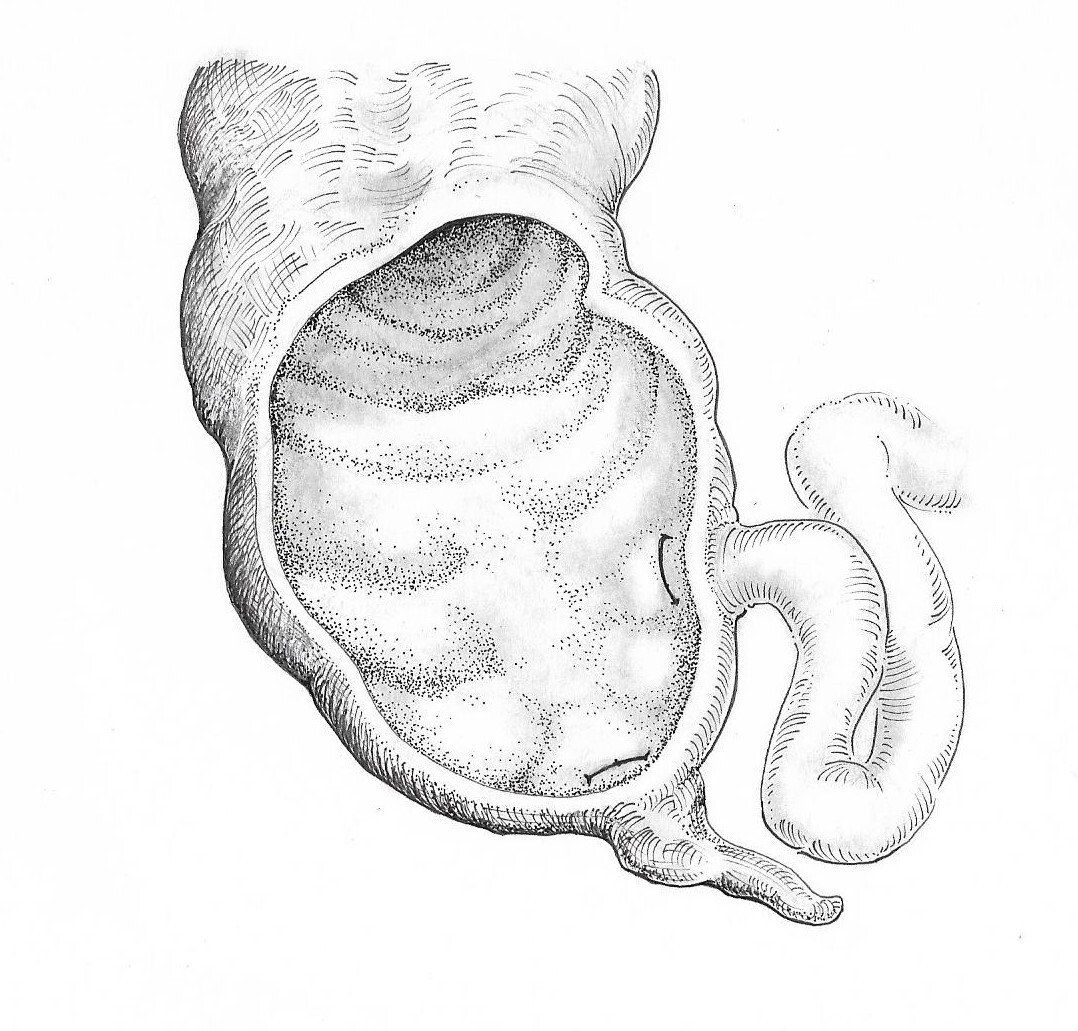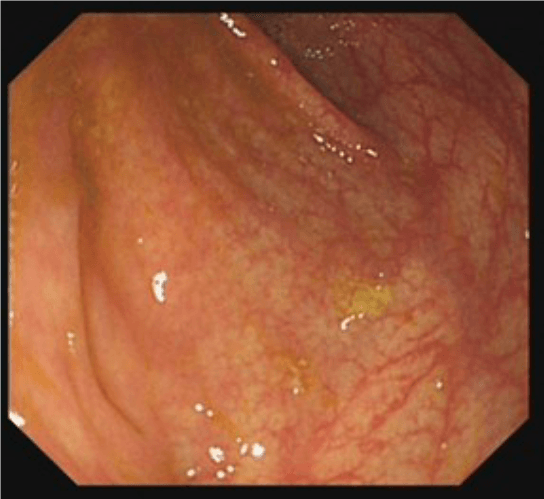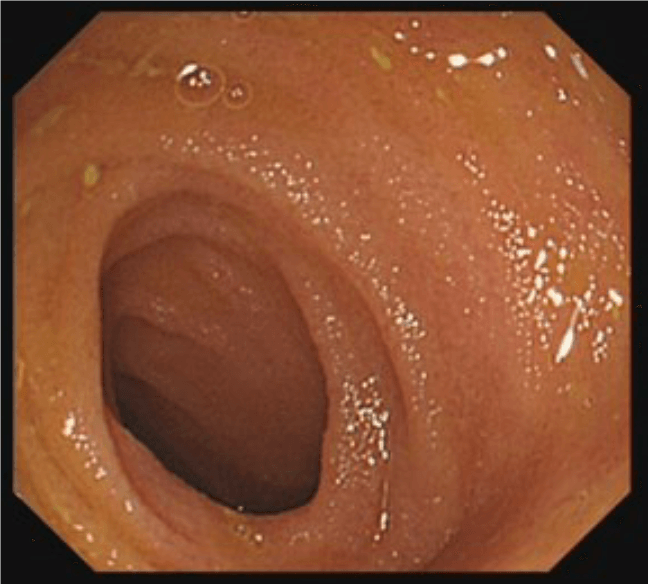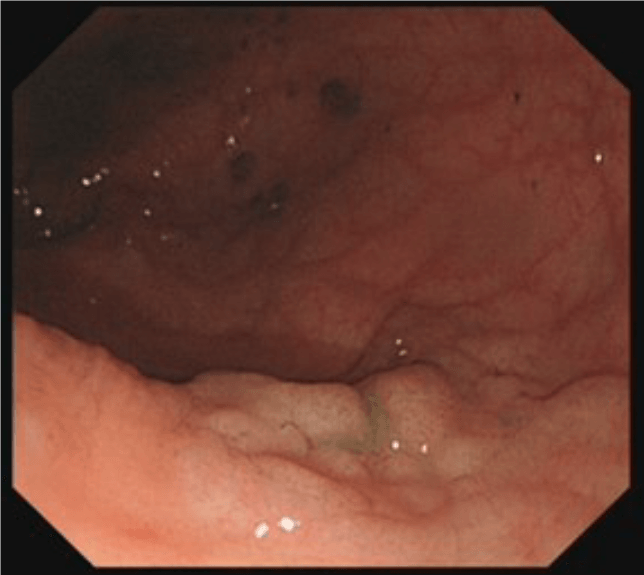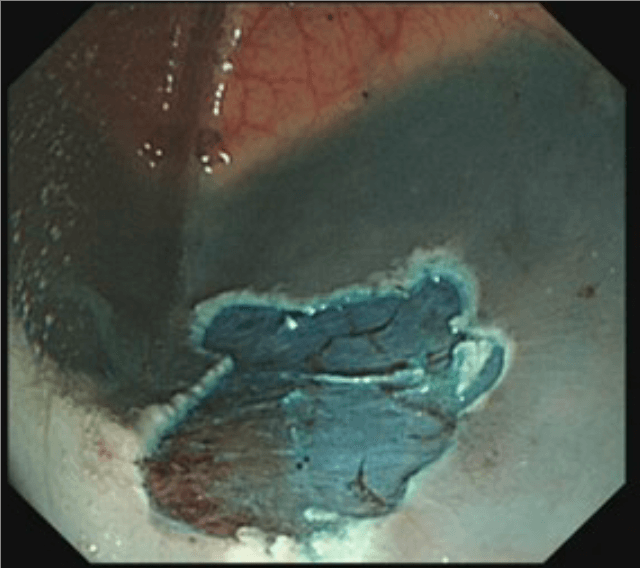Colonoscopy
Examination of the rectum, colon and lower small intestine
What this test involves
Colonoscopy involves passing a flexible tube (see image alongside) through the anus into the rectum and steering it around the colon. Some images of typical appearances are shown at the bottom of this page (hover over the images for a description).
The procedure is not painful but can be uncomfortable due to the gas inserted to distend the bowel and give clear views. We use carbon dioxide to do so which is rapidly absorbed and therefore such bloating does not last for long. The test can be carried out without sedation, using 'gas and air' ('Entonox') or with intravenous sedation and takes around 30 minutes.
Whilst we are negotiating bends in the colon, the bowel can stretch and this can give a 'cramping'-like sensation which is usually short-lived and can be easily resolved by straightening or withdrawing the scope.
If there are any abnormalities seen, we can introduce instruments down a channel in the colonscope to take a small sample of the tissue - a 'biopsy'. There are no pain receptors in the lining of the gastrointestinal tract and this is therefore painless. Biopsies are sent off to the laboratory for analysis and usually take 1-2 weeks before we receive a report.
The instrument channel can also be used for treatment purposes - for instance, to remove colonic polyps, or to cauterise bleeding blood vessels.
Risks and safety
Colonoscopy is a very safe procedure and we take every precaution to ensure your well-being and comfort.
Adverse events have been described to occur in less than 1 in every 200 cases and are usually mild. More serious consequences usually only occur in individuals with underlying diseases present or where complex interventional procedures are required.
- Intravenous sedation carries a risk of impaired breathing. The sedatives used are short acting and have safe reversal agents. We monitor your oxygen levels and provide additional oxygen throughout the procedure in order to reduce any associated risks of sedation.
- Serious complications include perforation and bleeding:
- Perforation - where the instrument accidentally passes through the wall of the colon is reported in between 1:2000 and 1:5,000 cases. It can often be managed by clipping or closing the hole at the time, but may require a stay for observation in hospital and in rare circumstances may require surgery.
- Significant bleeding is very rare, but reported after 1 in 400 colonoscopies where polyps are removed and can usually be managed by treating through the endoscope but may require an X-ray procedure or surgery in very rare circumstances.
Instructions and preparation for the test
You will be given 'bowel preparation' to take before the procedure. This is a strong laxative that has to be drunk in two separate 1 litre drinks in order to clear out the bowel and give good views of the lining. The instructions will be given to you with the bowel preparation.
We will discuss the procedure in detail with you on the day and answer any questions you may have, prior to asking for your consent to proceed.
Please make sure that you inform us prior to the procedure about:
- Medications - especially any medications that thin the blood ('anticoagulants') , or for diabetes
- Any severe cardiac or respiratory condition including a pacemaker device.
- Any allergies that you may have to medications (our procedures are latex-free).
After the procedure
You will be taken to a recovery area (if you have had sedation) for us to monitor your blood pressure and oxygen levels whilst the sedation wears off. This can take a few minutes to half an hour or so.
When you have recovered you will be given a drink and snack (or meal depending on the unit where you have this procedure undertaken!) before leaving for home. If you have had sedation, you will need someone to take you home and remain with you as a precaution. We would recommend that you do not drive, use heavy machinery or sign important documents for 24 hours after the procedure.
I will inform you of the findings of the test and if any biopsies have been taken that mean we have to wait for additional results from the laboratory. You will be provided with a copy of your report (usually with photographs for your records).
If you experience any significant symptoms within the following 48 hours after the test - including pain, fever, or passing blood in your bowel motions then please contact the unit immediately for further advice - they will put you in touch with me.
